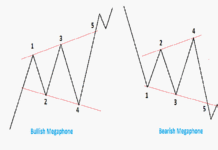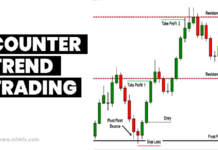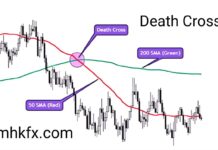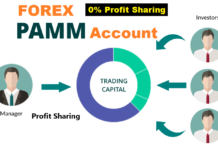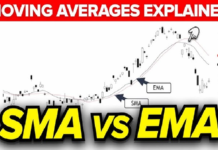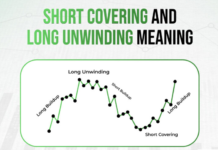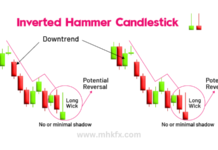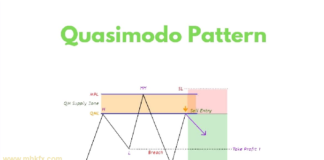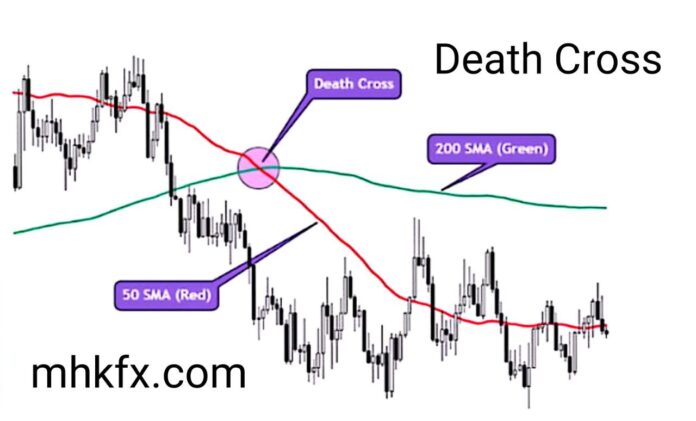
The term “Death Cross” often strikes fear into the hearts of traders and investors, representing a bearish technical signal that can predict prolonged declines in asset prices. Though ominous in name, the Death Cross can provide valuable insights into the market’s direction, especially during turbulent periods. In this article, we’ll explore what the Death Cross is, how to spot it, and key strategies for traders looking to navigate bearish markets more effectively.
Understanding the Death Cross
The Death Cross is a technical analysis pattern where the short-term moving average (typically the 50-day moving average) crosses below the long-term moving average (often the 200-day moving average). This crossover indicates that short-term momentum is slowing, which can point to a potential downtrend. The Death Cross is usually applied to stock charts, but it’s also relevant for other assets like commodities, cryptocurrencies, and forex.
The pattern isn’t foolproof; false signals can happen, and not every Death Cross leads to a prolonged downtrend. Still, when it appears, it often signals a period of heightened caution and can sometimes precede major market downturns, as observed during events like the 2008 financial crisis or the 2020 COVID-19 market plunge.
How to Spot the Death Cross
The Death Cross can be identified through these steps:
- Set Up Moving Averages: On a price chart, overlay the 50-day and 200-day simple moving averages (SMAs). Most charting platforms allow you to adjust timeframes for these indicators easily.
- Observe Crossover Points: Watch for the 50-day SMA (short-term average) to move below the 200-day SMA (long-term average). This point of intersection is the Death Cross.
- Look for Volume Confirmation: Increased trading volume during or after the crossover can strengthen the signal, as it suggests strong selling pressure behind the downward move.
- Evaluate Trend Consistency: Observe price action before and after the Death Cross. If the asset has been in a sustained downtrend leading up to the crossover, the Death Cross may reinforce the bearish sentiment.
Key Strategies for Traders During Bearish Market Signals
While the Death Cross may indicate bearish sentiment, there are several strategies traders can employ to either mitigate risk or capitalize on potential downside moves.
-
Use Stop-Loss Orders to Limit Risk
A Death Cross can be the precursor to substantial losses if a trader holds a long position. By setting stop-loss orders slightly below recent support levels, traders can manage risk by automatically exiting a position if the price continues to decline. For example, if a stock was previously holding support at $50, placing a stop-loss slightly below that level can help minimize losses if the Death Cross leads to further declines.
-
Implement Hedging Strategies
For traders looking to retain positions while managing downside risks, hedging can be a viable strategy. Short-selling related assets, buying put options, or using inverse exchange-traded funds (ETFs) are popular methods. For example, if a trader is holding a large position in tech stocks and sees a Death Cross in the NASDAQ Composite, they could hedge by purchasing put options on the index or investing in an inverse ETF that benefits from a decline in tech stocks.
-
Wait for a Confirmed Downtrend Before Shorting
Jumping into a short position at the first sign of a Death Cross can lead to losses if it turns out to be a false signal. Instead, traders can wait for additional bearish confirmation, such as the price staying below both moving averages or a breakdown of key support levels. Confirmed downtrends are often identified by lower highs and lower lows, which can provide more reliable short-selling opportunities.
-
Utilize Trend Indicators to Confirm Sentiment
In addition to moving averages, other trend indicators can help verify bearish sentiment. Indicators like the Relative Strength Index (RSI) and the Moving Average Convergence Divergence (MACD) can provide insight into market momentum. For instance, an RSI value below 30 suggests oversold conditions, which may confirm the Death Cross’s bearish implications, while a downward-trending MACD line can reinforce bearish momentum.
-
Focus on Defensive or Non-Cyclical Stocks
During bearish periods, some traders rotate their portfolios to focus on defensive sectors like utilities, healthcare, or consumer staples, which tend to be more resilient in down markets. Traders observing a Cross may consider shifting exposure from high-growth sectors to more stable ones, or even increasing cash holdings to weather the storm until market sentiment improves.
-
Consider Dollar-Cost Averaging (DCA) on Long-Term Investments
For longer-term investors, the pattern can present an opportunity to enter strong assets at a discount through dollar-cost averaging. This approach involves purchasing small amounts over time to reduce the impact of short-term volatility. If an investor believes in a company’s fundamentals but is wary of timing the bottom, DCA can be a prudent strategy to accumulate shares during market downturns.
Avoiding Common Pitfalls When Trading the Death Cross
The Death Cross is a powerful tool, but it’s not foolproof. Here are some common mistakes to avoid:
- Reacting Without Context: Relying on the pattern without considering the broader economic and market context can lead to knee-jerk reactions. It’s important to look at the entire picture, including macroeconomic factors and industry trends.
- Ignoring False Signals: Not every Death Cross leads to a major downturn. By combining the Death Cross with other technical indicators, traders can reduce the likelihood of getting caught in a bear trap (a false signal suggesting an impending decline).
- Overleveraging Short Positions: Bearish signals can be tempting for aggressive short-sellers, but overleveraging during a volatile period can amplify losses if the trend reverses unexpectedly.
Conclusion
The Death Cross is a powerful signal that often warns traders of potential bearish trends. By combining it with other technical indicators and risk management strategies, traders can mitigate risks and capitalize on market downturns effectively. Whether it leads to short-selling, hedging, or simply rotating into safer assets, the pattern presents opportunities as well as cautions, underscoring the importance of a balanced, well-informed approach to trading during volatile periods.
Click to sign up with Fusion Markets
Related Post:
Bearish Flag Pattern Suggests Potential Downtrend

